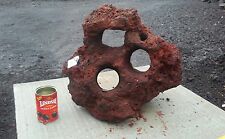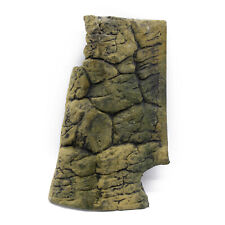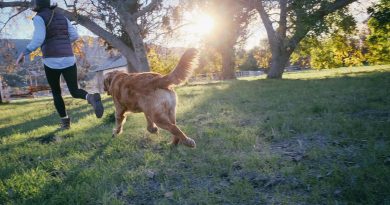Stretching Techniques for Dogs

Below, Sasha Foster weighs in on the do’s and don’ts of keeping your adult dog’s muscles supple.
Why You Should Stretch Your Dog
1. It May Help to Improve Overall Fitness
Foster says stretching your dog helps maintain joint function. One reason is because stretching produces a muscle signaling molecule called nitric oxide, according to studies on animals conducted by University of Michigan researchers Nicole Lockhart and Susan Brooks. When this molecule is present, blood flow tends to increase, inflammation is kept in better check, and force is decreased during certain muscle contractions, all of which can aid joints and support limb function.
2. Stretching May Prevent Tendonitis
Stretching can also prevent soft-tissue injuries like tendonitis, which Labradors and working dogs are particularly susceptible to sustaining.
3. Stretching May Reduce Back Pain
Stretching can be used to manage back pain that occurs when muscles in the lower back become tight, Foster says.
4. Stretching Can Alleviates Arthritis
Stretching can additionally decrease the achiness and stiffness often experienced by middle-aged to older dogs, and can even minimize the pain of arthritis. "Arthritis occurs when the bones are rubbing against each other in the joint," explains Foster. "If the muscles are nice and long, the joint is less compressed."
When to Stretch Your Dog
Stretch your dog two to three times per week for 10 to 15 minutes at a time – but not until after your dog is at least 2 years old. "You do not want to stretch a puppy because its growth plates are still in flux," explains Foster. For obvious reasons, you should also avoid stretching a dog with an acute injury.
Stretch your dog after it exercises. Research on human athletes has demonstrated that muscles need to warm up before being stretched. That principle is no different for dogs. "Stretching before the body is heated can cause injury. We want the muscles nice and warm – after a walk or a swim – before we stretch," says Foster.
Where to Stretch Your Dog
Stretch your dog anywhere you would do yoga. "Your dog should be in a relaxing environment before you begin," emphasizes Foster. She recommends that your pet lies down somewhere quiet and that you initially stroke or rock your furry friend before you begin, to encourage muscle relaxation.
How to Stretch Your Dog
Once your dog is lying down and relaxed, put your hand over the joint you will be manipulating. "If you’re stretching the shoulder, put your hand over the shoulder joint in order to relax the muscle. The nerves that turn the reflex off and on know your hand is there and keep the muscle from contracting," explains Foster.
Next, lift the limb parallel to the floor and move it slowly in the direction of the stretch. For example, if you’re working with the shoulder, first move the limb toward the nose – it should take three to five seconds to get there. Once you’re there and feel a slight resistance, hold for 30 seconds before moving the limb back to where it started and lowering it to the floor.
Shoulder and hip joints should ultimately be moved in four different directions: forward toward the nose, back toward the tail, up toward the ceiling, and down toward the floor. Elbow and knee joints can only be flexed and extended. "Joints should only be stretched within their range," says Foster. "Your dog’s joints do what yours do, so use your common sense."
Foster emphasizes that stretching your pet will not only benefit its physical condition but also its emotional state. "You know how you feel after a good yoga class? Dogs feel that way after stretching," she says. "It calms them down and just feels good."













